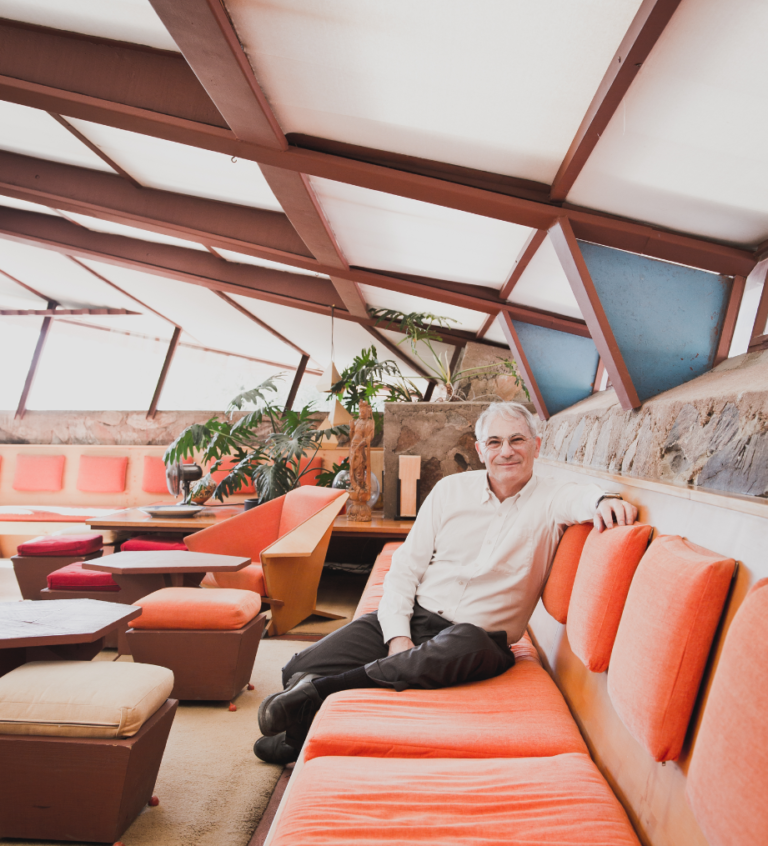Breath of Humanity
MIM Celebrates Global Flute Legacy
Writer Joseph J. Airdo // Photography Courtesy of the Musical Instrument Museum
When Matthew Zeller, curator for Europe at the Musical Instrument Museum, describes the flute as expressing “what it means to be human,” he’s speaking from intimate knowledge of nearly 150 objects now gracing MIM’s newest exhibition. Opening Nov. 7, “The Magical Flute: Beauty, Enchantment, and Power” transforms the Phoenix museum into a global symphony hall where ancient breath meets contemporary artistry.
“Flutes represent the breath of humanity in so many ways,” Zeller explains. “Guests will see everything from a prehistoric bone flute to those used in spiritual practices such as a 19th-century shakuhachi.”
The exhibition’s crown jewel may be an 8,000-year-old Chinese yue bone flute, suggesting music accompanied humanity’s earliest civilizations, but Zeller finds equal fascination in the stories these instruments continue to tell.
Among the treasures: Napoleon’s faceted glass flute, presented to the emperor by its maker, Claude Laurent, following his catastrophic Russian campaign in 1812, featuring 540 individually ground facets that “catch and reflect light, making it absolutely sparkle.”
The exhibition bridges millennia through more than 100 instruments from every continent, each chosen to “engage with one another to develop and contextualize compelling narratives about the flute’s global impact,” as Zeller describes the curatorial process.
“We have a fantastic curatorial team at MIM,” he says. “It was such a pleasure to work with my colleagues to select instruments from all around the world that engage with each other to develop and contextualize compelling narratives.”
Sir James Galway’s diamond-encrusted, 18-karat gold flute represents the pinnacle of modern virtuosic performance, one of two instruments acquired directly from “the Man with the Golden Flute” himself, along with a large contrabass flute. But the curatorial team’s expertise represented in this exhibition extends beyond European masterworks to pieces like an Edo-period miyogiri bearing the distinctive crest of the Taira samurai clan, displayed alongside samurai armor from the same clan.
“Together they show the importance of music in the warrior-scholar way of life,” Zeller explains.
The exhibition’s scope encompasses jazz flutist Herbie Mann’s instruments, Native American flutist R. Carlos Nakai’s pieces, and flutes owned by Hollywood studio musician Sheridon Stokes, whose solos graced “Mission: Impossible,” “Jaws” and “Titanic.” MIM’s signature audiovisual technology allows visitors to hear these world-class musicians playing the very instruments on display.
“MIM excels at bringing instruments to life,” Zeller explains. “The exhibition’s audiovisual content is the perfect platform to hear these world-class musicians play the very instruments that are on display. Guests at MIM experience music and musical instruments like no other.”
Beyond instruments, the exhibition features costumes from Mozart’s “The Magic Flute” by Marc Chagall and Dame Zandra Rhodes, each bringing a distinctive artistic vision to the opera’s fairy-tale world. Chagall’s design combines bold geometric shapes with expressionistic elements, while Rhodes embodies “the opera’s inherent fantasy and whimsy through her imaginative approach,” according to Zeller.
An 1849 Theobald Boehm flute represents revolutionary innovation in musical instrument making. Crafted just two years after Boehm perfected his pivotal key system, this instrument “represents a central pillar in the story of musical innovation,” Zeller says, noting that “nearly all modern Western woodwinds use a key system based on his revolutionary designs.”
The exhibition’s cultural breadth extends from richly decorated ancient panpipes from the Nazca people of Peru to an elaborately beaded Ǹdoŋ flute belonging to a Bamileke chief of Cameroon, each contextualizing how flutes have shaped cultural identities across civilizations.
“The flute’s cultural resonance is contextualized throughout the show,” Zeller explains. “Costumes from Mozart’s ‘The Magic Flute’ open the imagination and bring the guest into an enchanting immersive experience. Likewise, the Taira samurai armor and Chokwe hunter’s outfits portray the power their flutes were endowed with.”
For Zeller, the exhibition’s ultimate message transcends individual instruments or cultures: “The flute, in all of its simplicity and complexity, illustrates shared cultural themes and distinctive musical practices from around the world.”
“The ultimate power of the flute is in its ubiquity around the world,” he reflects. “Its sound, craftsmanship and deep-rooted cultural symbolism are avenues we explore to show how impactful the flute has been on human civilization.”
The Magical Flute: Beauty, Enchantment, and Power
Through September 2026 // 9 a.m.–5 p.m. // The Musical Instrument Museum // 4725 E. Mayo Blvd., Phoenix // $20; discounts available for youth, seniors and students // 480-478-6000 // mim.org






